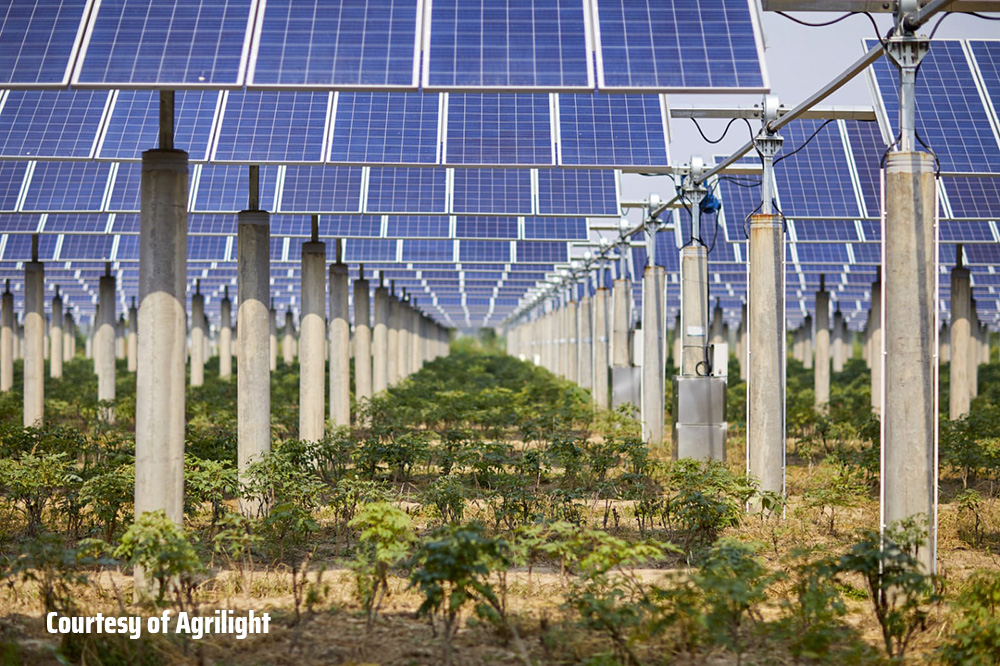
During the past two years, momentum has built rapidly for agri-photovoltaic (APV), the technology that allows agricultural land to be used simultaneously for growing crops and generating solar power.
The concept is simple: semi or non transparent solar arrays, with or without tracers, are installed on platforms above the crops, high enough that farmers can carry out their ongoing agricultural activities. Recent studies assert that installation of APV on 1% of the world’s arable land could fill world needs for electricity.
While no utility-scale installations have been carried out to date, tests in a variety of regions have provided initial data supporting the approach’s theoretical advantages:
- Improving agriculture: When deployed in areas of extreme heat, the shade produced by the solar arrays reduces water consumption and protects the crops from over-exposure. When deployed in areas of extreme cold, the platform can reduces frostbite and reduces the impact of hail, wind and heavy rain.
- Improving power generation: Contrary to popular thought, solar power generation actually improves when temperatures remain temperate. In hot/dry climates, installation of solar panels within irrigated fields helps optimize their production.
- Improving land use: a major challenge facing proponents of solar power is the massive amount of land needed for utility-scale power generation, and the distance between these land tracts and the cities that will use the power generated. APV might increase the usage of agricultural land, much of which is already located close to metropolitan centers.
- Providing income for independent farmers: small farmers throughout the world face fundamental challenges to stay in business. APV offers them the potential to expand the income-generating provision of their land without significantly changes to their farming activities. Note: APV installations are less expensive and provide more power-generating capability than rooftop PV systems.
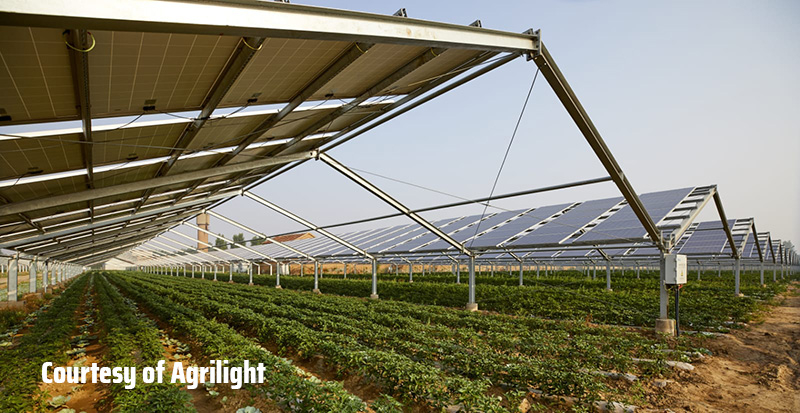
To achieve the agri-photovoltaics (APV) promise, it is necessary to scale up installations and to spread awareness and knowledge throughout the world. That will require overcoming of multiple challenges, ranging from fine-tuning of underlying technologies to optimizing installation and operational technologies, while generating extensive data on APV impact on crops and farming methods.
To facilitate and accelerate this process, Migal Research Institute is now launching its APV Knowledge Center.
Migal is uniquely qualified for this initiative due to its recognition throughout the world as an innovator of advanced applied agricultural technology, together with its location in Israel, the pioneer of solar energy generation. The Migal’s APV Knowledge Center is a natural outgrowth of Migal’s own extensive research in orchards, which is currently being used in farms growing avocados, bananas, grapes, kiwis and variety of deciduous trees, while using different shading methods to reduce radiation, stress and pests in the orchard.
Migal’s APV Knowledge Center is bringing together experts with experience in research of all aspects of plant sciences and crops. Besides continuing to advance the art via its own research, the APV Knowledge Center is offering consulting and research services across all phases of APV projects.
APV in Israel
- Israel’s current installed solar generation capability is ~2.9 GW, representing approximately 7% of the country’s total electricity consumption.
- The Israeli government forecasts that the country’s electricity demand will reach ~12 GW in 2030.
- According to the National Renewable Energy Laboratory, by 2030, utility-scale solar could cover almost 2 million acres of land in the United States.
Migal R&D North - Knowledge and Innovative Technology Center for the Orchard Sector in the Context of PV Integrated Cultivation
We will work together in full cooperation with the farmers, the agronomiy consultants and all of the professionals necessary.
CALL FOR of the Israeli Ministry of Energy:
- A unique collaboration between the Ministry of Energy and the Ministry of Agriculture has spawned a research program to promote energy production in agriculture.
- This is the first time a country has decided to conduct research in APV at the national level.
Apply for submission of preliminary plans for the dual use of renewable energies in agricultural areas. For more information in Hebrew: https://www.gov.il/he/departments/publications/reports/agro_voltai
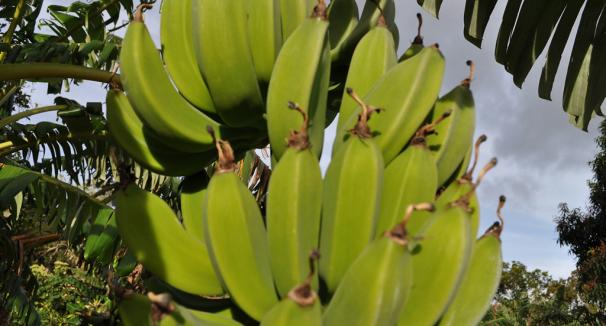
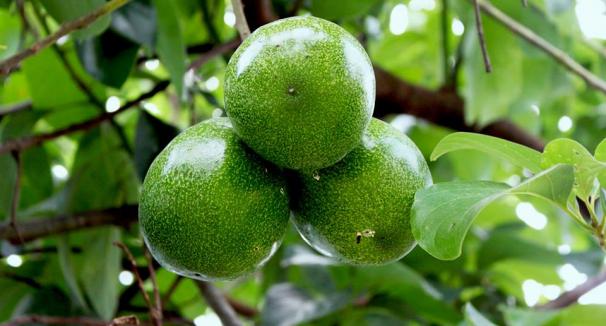
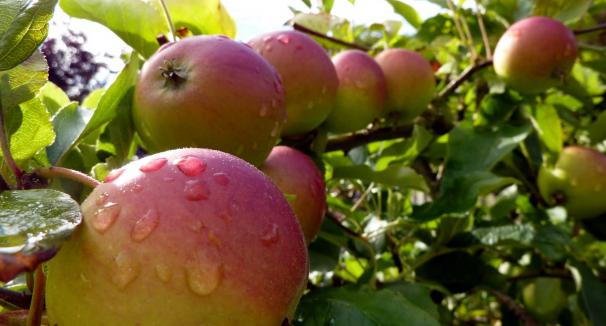
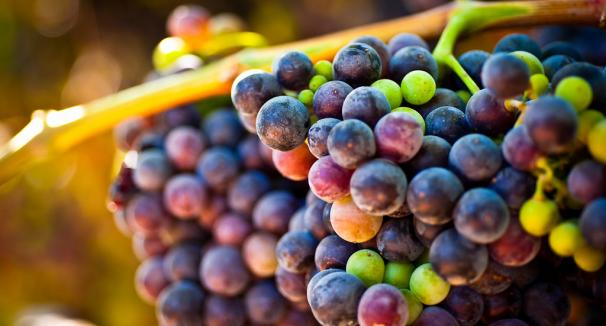
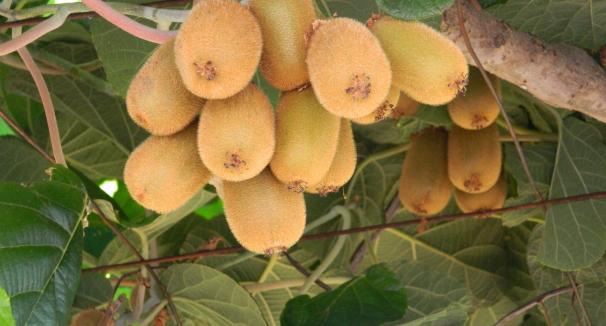
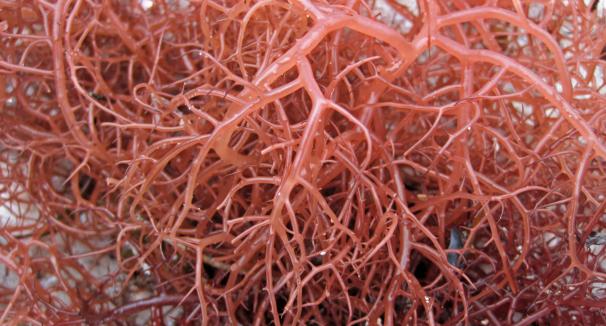
Contact Block - agrivoltaics
We invite you to contact us to hear more about our concept and technology, to brainstorm together about the services we can offer for your initiative, or to join our team.
Webform
Our Researchers
Dr. Navot Galpaz
Subtropic crops, bananas, mango
Dr. Lior Rubinovich
Subtropical crops: avocado
Field crops: quinoa
Dr. Omer Crane
Grapevine and deciduous fruit trees
Prof. Raffi Stern
Subtropical crops: lychee, kiwi and pinnapple
Dr. Mery Dafny-Yelin
Plant pathology
Field crops
Dr. Aviv Asher
Cattle Physiology
M.Sc. Zlil Baras
Citrus
Eric Benmeir
APV Product Coordinator
